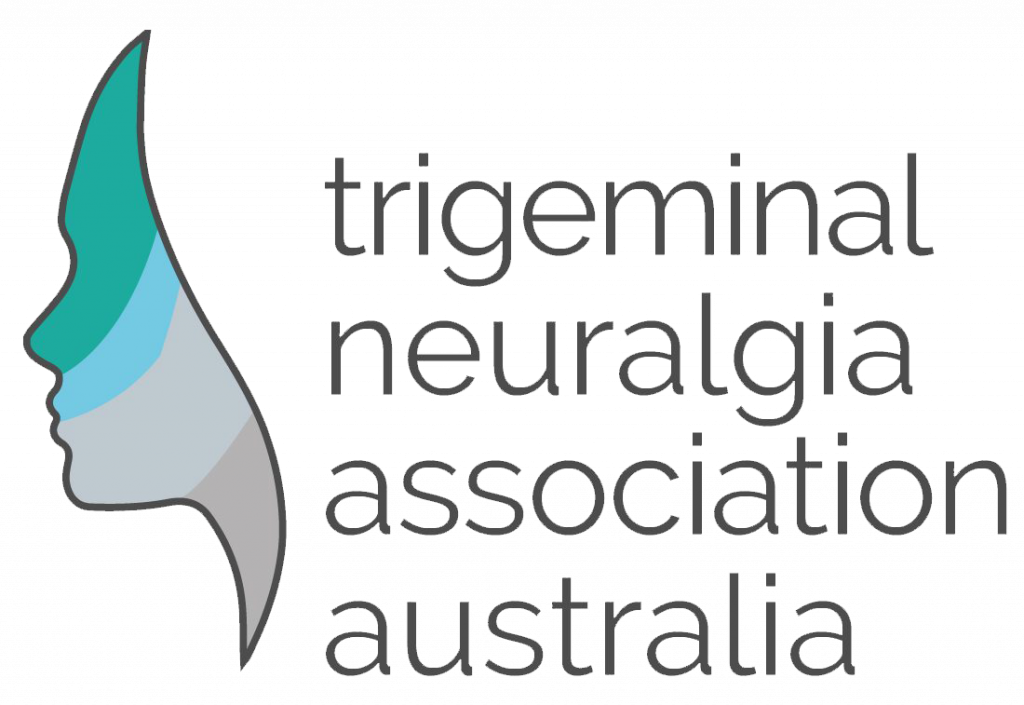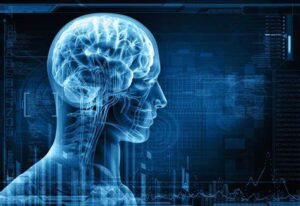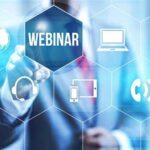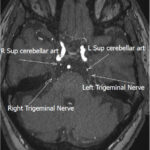Our Vice President and Tasmania support group leader, Helen Tyzack, updated her group about neuromodulation for trigeminal neuralgia back in 2021. She has provided the information she gathered, and we hope it may provide education and understanding about this treatment
Neuromodulation. In italics below I have added the contents of emails I previously sent to all those on my database. The first email was dated 22nd May 2021.
Yesterday it was exciting to watch and listen to the Webinar from the USA at 9am; chaired by the president of the Facial Pain Association of America Dr Jeffrey Brown interviewing a Member of their Medical Board, Dr Konstantin, (an expert in neuromodulation of facial pain). Previously, thanks to member Peter, I had sent you the information for you to link in. I received an immediate response yesterday from Peter after the Webinar and I wonder how many others took up this excellent opportunity.
This free opportunity was excellent but whether it was useful depends on your circumstances. So, what did I learn? In brief,
- Neuromodulation is management, not cure, by a non-destructive change in our nerve activity – using a device
- The device delivers non-painful sensations to the nerve.
- Neuromodulation is minimally invasive
- Neuromodulation can be facilitated inside our body or outside depending on need and circumstances.
- Neuromodulation always involves the use of small devices. That is, the chemical modulation of our nerves by our medications does not count as neuromodulation.
- Neuromodulation does NOT work for people with Typical Trigeminal Neuralgia and usually makes the pain worse.
- Neuromodulation does work for people with neuropathic pain on the trigeminal nerve; it is most effective for those who have more or less constant continuing unpleasant pain. Some sufferers with Typical TN can, over time, develop this neuropathic continuous facial pain – either with or without the Typical TN (and its sharp shooting electric shocks). The neuromodulation may (and may not) work for such people.
- The process is for the specialist to test a potential patient with an external device over a week to 10 days making adjustments so that the sufferer can work out whether this neuromodulation process might be comfortable for them and reduce or remove the pain. If all works well then, a device is implanted – and can be there for up to 15-18 years if need be. If there a period of 6 months without the pain, the thinking is that the device can be removed, and neuromodulation is no longer required.
- Usually, you do NOT get the ideal result first up and it needs reworking so should be seen as a work in progress. Every person’s body is unique and therefore the device controls have to be uniquely set up.
- Once a week the device needs to be recharged and this takes about 30-40 minutes
- Neuromodulation also works well with sufferers of Occipital Neuralgia at the back of the head but does not work for migraines.
- Who does neuromodulation treatments? Find only the most experienced. Beware of someone who says they have 100% success – they may have only treated one or two people. The safest practitioner is the one who has already encountered complications with this process and has safely managed and solved the problems; the more complications (not of their own doing) they have safely coped with the better.
- How long before you feel relief after the device is implanted? Rarely immediately and mostly hours, days or weeks later. The message was to be open minded and not to panic if the response is not fast. Allow time for your body to adjust
Main point: Not every treatment will work for every person. No treatment will work all the time.
I am fortunate at the moment not to be taking medications or in pain. But I am mindful that the time will come when the pain returns. This Webinar was helpful because I now know more about my options for managing the pain. In Tasmania where would I go for advice? I would be talking with members of the Trigeminal Neuralgia Associations of Australia’s Medical Advisory Board.
My second email was dated 10th August.
A few months ago, I told you I had listened to/watched webinars on the topic of Neuromodulation as a treatment for Trigeminal Neuralgia pain. Afterwards, I set out to determine if a specialist might come to Tasmania and talk to people in our Support Group and any others who might be interested.
Since then, I have been exchanging emails with Dr Nick Christelis, the President of the Neuromodulation Society of Australia and New Zealand. Recently, we talked by phone about the options, but a visit to Tasmania by a specialist to meet with TN sufferers is not on the cards. However –
Firstly:
Nick confirmed there was not a specialist in Tasmania, but he explained that he had used neuromodulation on patients with Trigeminal Neuralgia. He would welcome contact from any Tasmanian sufferers and be prepared to do an initial Telehealth consultation. His contact details are on the website: https://painspecialistsaustralia.com.au and his consultation and surgical location is within Warringal Private Hospital in the Melbourne suburb of Heidelberg, Victoria. Phone 1300 798 682. If you read through this page and watch the video, then you will understand more about the services he offers. His site has this to say about Nick:
Nick now practices 100% within the field of pain medicine. He is an interventional pain specialist combining a multidisciplinary team approach with advanced pain interventional techniques like nerve and joint blocks, epidural injections, radiofrequency ablation, pulsed radiofrequency, spinal cord stimulation and other advanced neuromodulation techniques.
Secondly:
Nick explained that a quarterly webinar is offered from within his organisation and can be accessed on the bellow link
Please note that I have no experience of neuromodulation and no experience of Nick’s capabilities, so this email is not meant to be a recommendation. Rather, I am letting you know about this option, in case neuromodulation is a process which could improve your quality of life.
If you decide to try this, I would be very interested to know what the process is and all the ins and outs. Not to mention whether it was useful for you and reduced, removed your pain. I am sure other sufferers would also be interested so please keep me posted.
For facial pain sufferers in other mainland states, I recommend you read through the Neuromodulation Society of Australia and New Zealand website to find specialists close to you.
Extra Q&A after the recent webinar on neuromodulation pain management produced by the USA Facial Pain Association
1. Can a TENS unit applied somewhere help? Is the concept of neuromodulation similar to using a TENS unit? thank you.
The TENS is indeed one of the types of neuromodulation, and we do recommend trying it in patients who can tolerate placement electrodes onto painful regions. It tends to be much less effective than other neuromodulation approaches, but is definitely worth trying due to its low invasiveness. Keep in mind, that pain that does not respond to TENS may still be relieved by invasive neuromodulation with implanted devices.
2. Explain the relationship between neuromodulation and neuroplasticity?
Neuromodulation in many ways relies on neuroplasticity – we are trying to modify neural activity by adding neuromodulation signals, and neural plasticity plays a major role in cooling down hyperactive parts of the nervous system that are responsible for development of pain in the first place.
3. “Explain foramen ovale stimulation?” What’s the difference
I am not aware of “foramen ovale stimulation” – most likely, the procedure which is referred here is the stimulation of the trigeminal ganglion (Gasserian ganglion) that is reached through foramen ovale. This approach is known for many years but is rarely used, mostly because it is difficult to keep electrodes in that location as they tend to migrate over time. In principle, however, the trigeminal ganglion stimulation is a very effective approach to control neuropathic facial pain and may be considered if the pain involves several trigeminal branches at once.
4. Can it be used for a patient with a pacemaker?
Yes, neuromodulation can be used in presence of pacemakers and defibrillators. Your doctors need to be aware of these devices so the proper precautions may be made in choosing the device and its location in the body.
5. What is the success related to pain as a result of acoustic neuroma surgery/radiosurgery?
The mere presence of acoustic neuromas, the surgery to remove the tumor, and sometimes radiosurgery for the tumor may result in development of facial pain. Sometimes it presents as secondary trigeminal neuralgia and its treatment resembles trigeminal neuralgia management algorithm, but in some cases the patients develop trigeminal neuropathic pain or occipital neuralgia, and these conditions may great indications for neuromodulation.
6. Would it help with Geniculate Neuralgia?
The pain of geniculate neuralgia has not been investigated as an indication for neuromodulation, or at least I have not heard of it. The classical geniculate neuralgia may require either microvascular decompression or, more often, an open rhizotomy of nervus intermedius – this is what I normally recommend to my patients.
7. Once implanted, can the patient stop taking medications?
Yes, it is possible – but we usually start considering weaning pain medications only after the patients report symptomatic improvement from neuromodulation. Majority of patients are able to significantly reduce the amount of their pain-relieving medications as a result.
8. How much experience does Dr Slavin has with this? How many has Dr Slavin done?
Neuromodulation is a large part of my practice ever since I completed my fellowship in 1999 – and I do between 100 and 150 neuromodulation surgeries every year. Very few of these surgeries are done for facial pain as most facial pain patients I see end up having other interventions, including microvascular decompressions, percutaneous rhizotomy, radiosurgery, etc. Most neuromodulation surgeries in my practice are still done for pain in lower back and extremities, Parkinson disease and tremor, epilepsy and other functional neurosurgical conditions.
9. If I had an MVD without any pain relief, would this help?
Neuromodulation is generally recommended for trigeminal neuropathic pain and not for trigeminal neuralgia. If the patient’s typical trigeminal neuralgia did not improve with microvascular decompression, we would usually consider either repeating the decompression or proceeding with percutaneous interventions. If the pain is non-neuralgic but rather neuropathic in nature, neuromodulation would be an appropriate thing to consider.
10. Are the electrodes ever implanted into the brain and if so, where?
The brain stimulation for facial pain is usually reserved for patients with anesthesia dolorosa – the electrodes are placed either over the surface of the brain (so called motor cortex stimulation) or in the depth of the brain in the area of thalamus or brainstem (so called deep brain stimulation).
11. I am just finishing TMS therapy. It has not helped me. I like Dr. Brown’s suggestion to “adjust the magnet.” How can the Dr. find the correct “spot” for neuropathic pain?
It may be challenging to find the right spot for TMS. We usually recommend finding the face representation in the contralateral motor cortex or focusing stimulation at pre-motor area (which is used for treatment of depression).
12. Following left craniotomy for Trigeminal Schwannoma I have a mix of numbness on lower jaw but extremely sensitive and continuous pain on temple, cheek, and upper jaw. Is the neuro modulation compatible when both numbness and sensitivity are combined?
To answer your question, it would be important to find out whether the numbness is complete or partial. Stimulation of peripheral branches may help in case of partial numbness. Complete numbness may necessitate stimulation of the uppermost cervical spinal cord, the deep brain structures or the motor cortex.
13. Hi, I have a question from the webinar. Dr. Slavin described neuromodulation, if I understood correctly, as an option for trigeminal neuropathic pain but not trigeminal neuralgia and described TN2 symptoms as neuropathic pain. Just to clarify before I get my hopes up, is “trigeminal neuropathy” the same thing as TN2?
Trigeminal neuropathic pain is different from TN2 but there is certain overlap between them. As a matter of fact, about 20 years ago we published a theory that postulated a possible transition from TN2 to trigeminal neuropathic pain as a part natural history of this condition. Right now, we do not recommend neuromodulation for TN2, but use it routinely and frequently for trigeminal neuropathic pain.
The original webinar published by the FPA can be watched below –
Facial Pain Association Neuromodulation – YouTube






